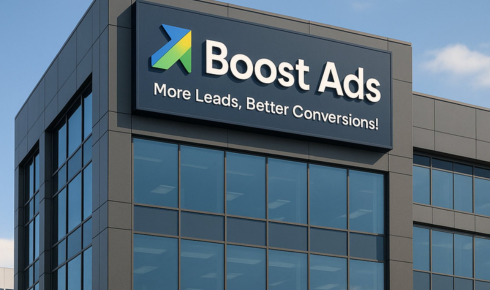Understanding the Importance of Cross-Border Digital Strategy
Cross-border marketing is no longer optional for ambitious brands—it’s a necessity in a globalized digital economy. For companies based in Canada, especially in Vancouver, tapping into the vast U.S. market just across the border offers tremendous growth potential. A Digital Marketing Agency Vancouver that specializes in cross-border strategies can help businesses overcome cultural, legal, and logistical hurdles to thrive internationally.
For example, a Vancouver-based eCommerce skincare brand might leverage bilingual PPC campaigns targeting American and Canadian consumers. This can be executed by setting up geo-targeted Google Ads with variations in language, currency, and product availability. A/B testing different ad creatives for U.S. and Canadian audiences helps fine-tune the approach. These efforts ensure messaging resonates on both sides of the border, driving better ROI.
Tailoring SEO for Multi-Market Visibility
Search Engine Optimization (SEO) remains a foundational tactic for cross-border success. However, ranking in the U.S. versus Canada involves more than changing keywords. It requires building local relevance in each country’s digital ecosystem.
SEO Agencies begin by conducting market-specific keyword research using tools like Ahrefs or SEMrush, looking for volume discrepancies and intent shifts across borders. For instance, while Canadians may search “toque,” Americans look for “beanie.” A dual-content strategy—using canonical tags and hreflang attributes—ensures each region sees the right version without cannibalizing SEO performance. Implementing this properly improves international SERP presence and avoids duplicate content penalties.
Localizing Content Without Losing Brand Voice
Localization isn’t just translation. It’s cultural adaptation. Successful digital agencies craft content that aligns with local idioms, holidays, buying habits, and customer expectations, while retaining a brand’s unique voice.
Take, for instance, a financial services firm in Vancouver expanding into the U.S. Content must consider regulatory differences, financial terminology, and even humor. Agencies localize blogs, email marketing campaigns, and social media posts while aligning tone with the brand’s ethos. Tools like Smartling or Lokalise can streamline this process. The result? Seamless brand storytelling that feels native to every market.
Navigating Regulatory Differences in Ads and Data
Digital marketing across borders comes with legal and compliance complexities. Data privacy regulations like Canada’s PIPEDA and the U.S.’s CCPA differ significantly. Digital marketers must ensure ad targeting and analytics practices comply with both.
Execution begins with a privacy audit—ensuring opt-in processes, cookie policies, and third-party tools meet legal requirements. Next, platforms like Meta Ads or Google Ads must be configured to follow age-gating, location-targeting rules, and industry-specific ad policies. For example, alcohol-related promotions require additional age verification steps in both markets. Cross-border-savvy agencies proactively implement these controls to protect their clients.
Leveraging Cross-Border Social Media Strategies
Social media is a powerful tool to build brand awareness across regions, but strategies must be adapted for market-specific behavior. Agencies analyze when users are most active, what content performs best, and which platforms dominate—Instagram might be huge in Canada, while TikTok sees higher traction in certain U.S. states.
A B2C apparel brand, for instance, may run parallel influencer campaigns in both countries. By recruiting Canadian and American influencers and tailoring posts with local trends (e.g., sporting events, memes), agencies build authentic regional connections. Scheduling tools like Later or Hootsuite allow content to be customized per region while maintaining consistency in branding.
Building Bi-National Backlinks and Media Exposure
Authority-building is critical for SEO and reputation. For cross-border efforts, earning backlinks from media outlets, blogs, and directories in both countries is essential. Digital PR campaigns play a key role here.
Agencies execute this by drafting separate press releases for Canadian and U.S. markets, reaching out to localized media lists, and pitching country-specific story angles. For example, a Vancouver tech startup may highlight “Canadian innovation entering the U.S. market” to American tech publications. By securing mentions on both sides of the border, agencies enhance credibility and boost organic traffic.
Coordinating Bilingual Campaigns (When Needed)
Though English is dominant, French-speaking populations in Canada and Spanish-speaking segments in the U.S. make bilingual marketing increasingly relevant. A cross-border digital agency may recommend launching parallel campaigns in multiple languages to broaden reach.
Execution begins with translation and cultural adaptation—Google Translate won’t cut it. Native-speaking writers or localization experts are crucial. From there, campaigns are A/B tested, and ad spend is allocated based on conversion performance across language groups. Platforms like Facebook Ads Manager support language-specific segmentation, making this strategy manageable and scalable.
Tech Stack and Reporting for Cross-Market Insights
Tracking performance across borders requires a unified, yet flexible analytics framework. Agencies often deploy tools like Google Analytics 4, which allows custom dashboards segmented by region, device, language, and behavior.
This setup begins with tagging campaigns correctly (UTM parameters for each country/market), then setting up conversion goals and eCommerce tracking separately for U.S. and Canadian sites. Weekly or monthly reports offer insights into which region performs better by channel, helping agencies optimize budget allocation. A forward-thinking Digital Marketing Agency Vancouver will make cross-border reporting not just accessible—but actionable.




